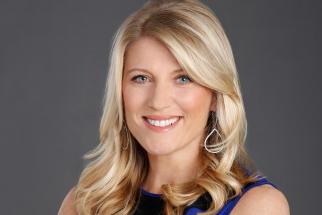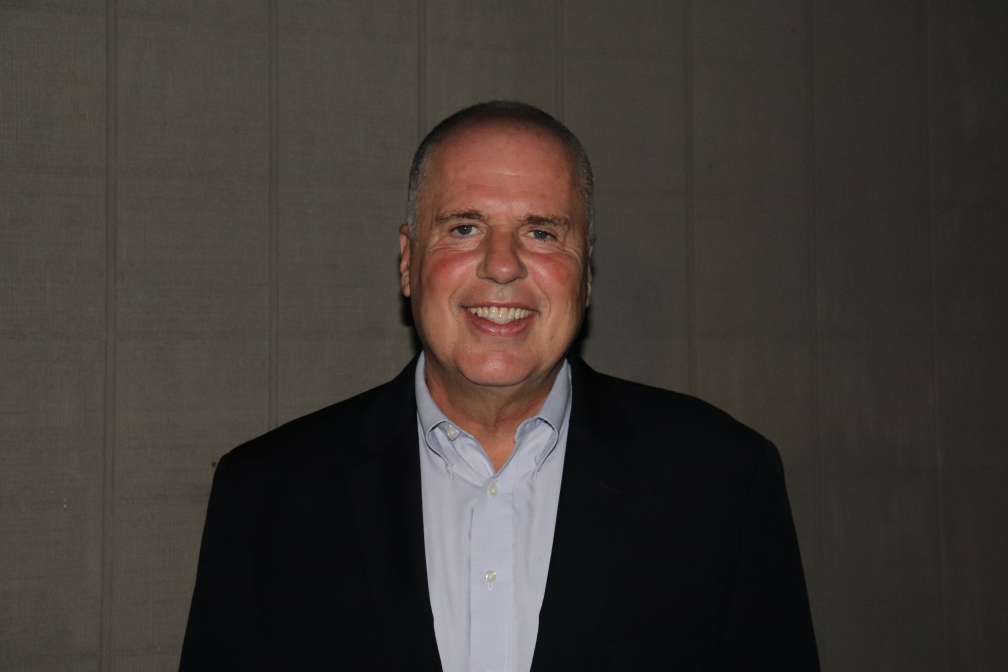NATPE: NBCU's Molen Says Peacock Ad Model ‘Gives Us a Unique Space in the Marketplace’
Touts free-to-consumer scheme as an a edge against subscription competition

MIAMI — With the media-technology world fixated on the growing number of consumer options for streaming video, NBCUniversal continues to beat the drum that its (largely) free-to-consumer, ad-supported model for its upcoming Peacock OTT service gives it an edge over the competition.
“Consumers are going to choose content wherever and whenever, and Peacock is a step in that direction,” said Laura Molen, president of ad sales and partnerships for NBCUniversal, speaking Wednesday at the annual National Association of Television Programming Executives (NATPE) conference. “It brings together our entire ecosystem, and the ad-supported supported model gives us a unique space in the marketplace. This is an opportunity to offer it to consumers for free; and an opportunity for marketers to put their ads on this blank canvas.”
Molen’s comments came less than one week after Comcast and its NBCU division unveiled the major details behind Peacock at an investor event in New York.
Peacock will be available in two tiers: Peacock Free and Peacock Premium, and will feature more than 600 movies and 400 television series, and live and on-demand content (across news, sports, late night and reality).
Peacock Free is ad-supported option will offer more than 7,500 hours of programming (including next day access to current seasons of freshman broadcast shows, classic series, movies, curated daily news and sports programming).
Ad-supported Peacock Premium, which is offered at no additional cost to Comcast and Cox subscribers, will include full-season Peacock originals and tent-pole series, next day access to current seasons of returning broadcast series, early access to late night talk shows, and additional sports programming. The cost is $4.99 per month, and users can purchase the ad-free experience directly for $9.99 per month.
And NBCU has been out aggressively beating the drum ahead of the service’s April launch. Before the investor meeting last month, NBCU ad chairman Linda Yaccarino was at CES in Las Vegas, also explaining how advanced advertising will give Peacock an edge over Disney+, HBO Max and the other subscription services crowding into the OTT market.
“At the highest level, we’re partnering with marketers to really break legacy and create an entirely different space for advertising,” said Molen, who refers to Peacock as ‘giving advertisers a seat at the table to learn about what audiences want from the commercial experience.”
“This is a chance to innovate together,” she said. “We have a rich history in this space. Going back to the very beginning, NBC was the first network to even air a commercial on air, which was for Bulova watches. And we have always been on the forefront of change.”
Peacock has announced State Farm, Target, Unilever and Apartments.com as the first batch of confirmed advertisers for Peacock.
“We are going to be working together with a streaming council to really add to the ad experience,” Molen said. “We are going to be trying new formats, and we will be working together to understand frequency capping, where to place content, and new ways for consumers to interact with content.”
Molen cites the “Prime Pod,” a 60-second standalone break, which will be the foundation for advertisers at Peacock. There will be five Prime Pods in one hour on Peacock for traditional ad units, and there will be new ad units created to maximize the advertiser experience at the streamer.
“We want to offer the consumers a deeper ad experience at Peacock,” she said. “All different kinds of things that will re-explore and reimagine ads. The more we lean into giving consumers the content when they want and where they want, the more they are going to interact with content in all the places that it exists. We have all the ingredients…content, technology and the experience to make this all work.”
The smarter way to stay on top of the streaming and OTT industry. Sign up below.
Marc Berman is editor-in-chief for media-centric The Programming Insider (programminginsider.com), which pioneered the email newsletter format at its inception in 1999. Marc has written for a wide range of publications including Broadcasting + Cable, Next TV, Forbes, Newspro, Campaign US, The Hollywood Reporter and Variety. Known as “Mr. Television” at Mediaweek (now Adweek), Marc has appeared on camera on Entertainment Tonight, Extra, Inside Edition and CNN and MSNBC, among other series and outlets. He is a member of The Television Critics Association and The Broadcast Journalists Television Association. And Marc put his TV historian hat on as author of desk calendar Today in TV History.

